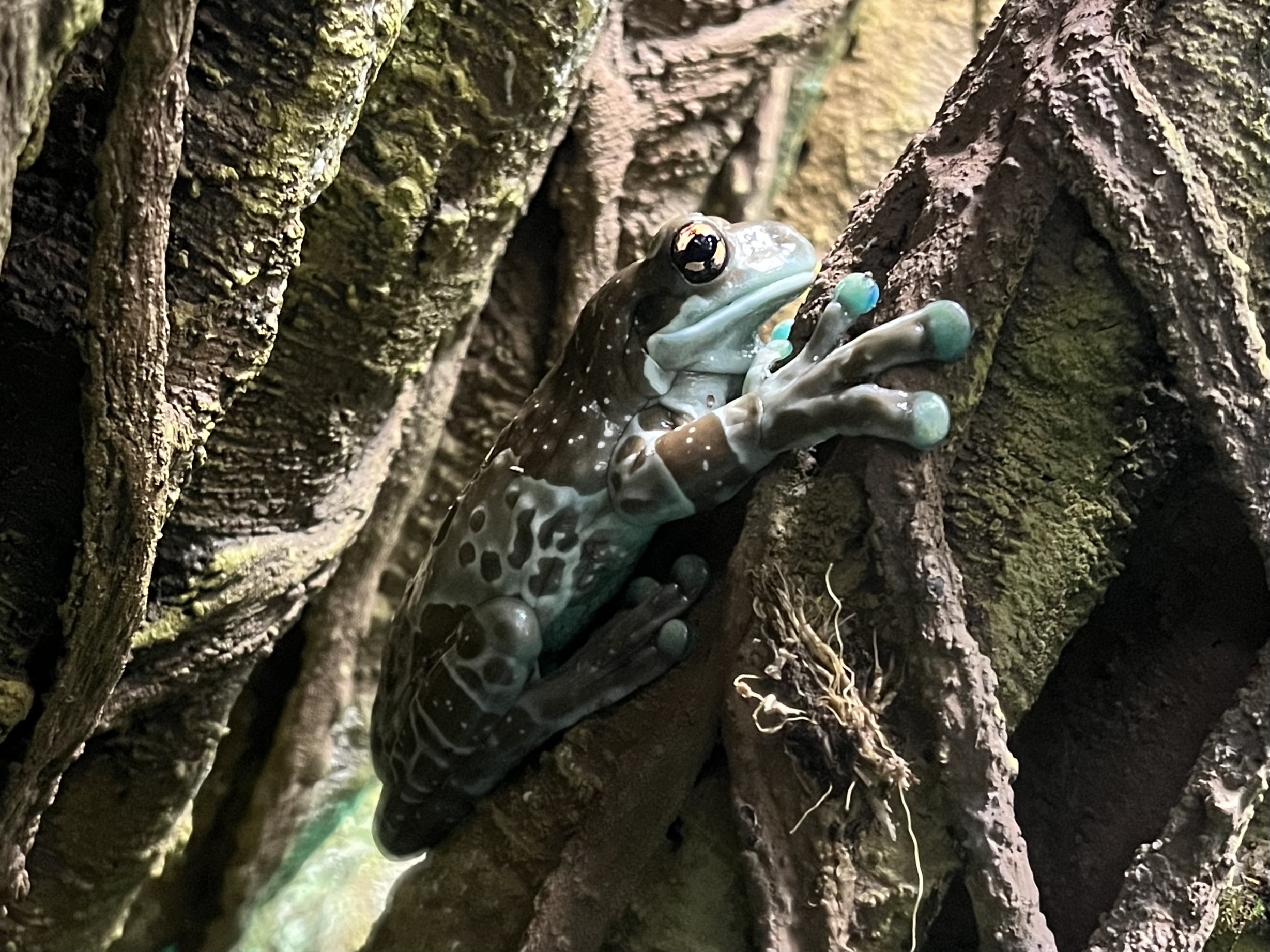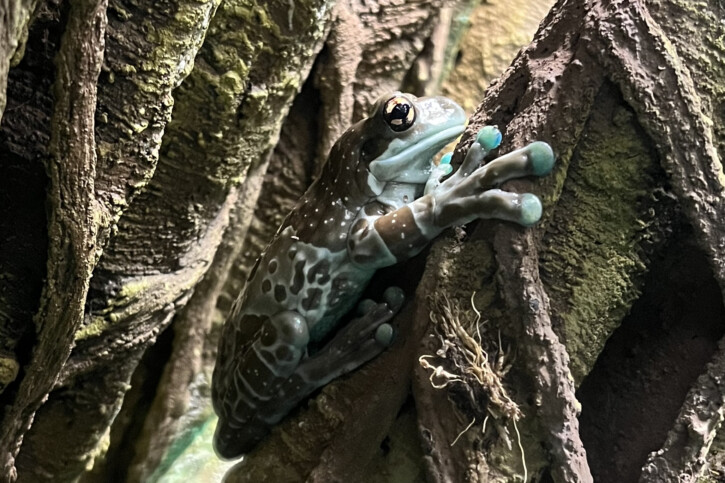mission golden-eyed treefrog
| Family | Hylidae |
|---|---|
| Genus | Trachycephalus |
| IUCN category (World) | LC |


Introduction
The Amazon milk frog was initially described as Hyla resinifictrix by Goeldi in 1907. After several taxonomic changes, the species is now classified under the genus Trachycephalus. It is a nocturnal arboreal species that inhabits the canopy of primary rainforests, where it reproduces in phytotelmata (exclusively tree holes).
Females produce milk in special cutaneous glands located on their backs. Tadpoles climb onto the female's back to feed on this maternal milk. The milk contains proteins, lipids, and carbohydrates, as well as bioactive compounds that are highly beneficial for the tadpoles. This milk also contains toxic substances used for defense against predators.
This sheet is currently being prepared. The texts currently proposed come from our data model or are being drafted. To request priority for this content, you can write to us HERE.
Who is it?
Morphology
-
Size7 - 10 cm
-
Motifmottling
-
Mimicryplants
-
Size7 - 10 cm
-
Motifmottling
-
Mimicryplants
How to recognize this amphibian ?
The dorsal side is primarily brown-gray and covered in small pustules. White spots are visible in the brown areas. The tips of the fingers are bluish-green. Crossbars on the forelimbs and hindlimbs are of a dark brownish-gray.
Behaviour & Life cycle
-
Sociabilitysolitary
-
Way of livingnocturnal
-
VenomousYes
-
Dietpredator
During the day, this species blends into its surroundings to remain inconspicuous, usually in tree holes. It becomes active once night falls, primarily hunting for insects.
Reproduction
-
Reproductionovipare qui pond sur substrat caché
Reproduction occurs during the rainy season. Males emit a loud and prolonged call to attract females from their shelters, which are tree holes containing water. Once a pair is formed, both frogs head to the water to mate.
Risks for humans
-
VenomousYes
This species appears to produce potentially venomous milk and should not be ingested.
Origin and distribution
What is its habitat?
Natural environment characteristics
-
Temperature23 - 29 °C
-
pH (acidity)6 - 7
Biotope presentation
This animal moves in trees, especially in tree holes. It is typically observed at heights ranging from 2 to 32 meters above ground level. In these tree holes, the water's pH ranges from 6 to 7, with an oxygen content of 0.2 to 3.9 mg/l.
To go further
Sources & Contributions
Participation & Validation
The Fishipedia team and specialist contributors are committed to providing high-quality content. However, although the information comes from scientific sources or testimonials from specialists, the cards may contain inaccuracies.

Benoit Chartrer
Translation
Translation done with the valuable contribution of our translators, who make this information available to a wider audience. We sincerely thank them for their commitment.
Scientific partners












